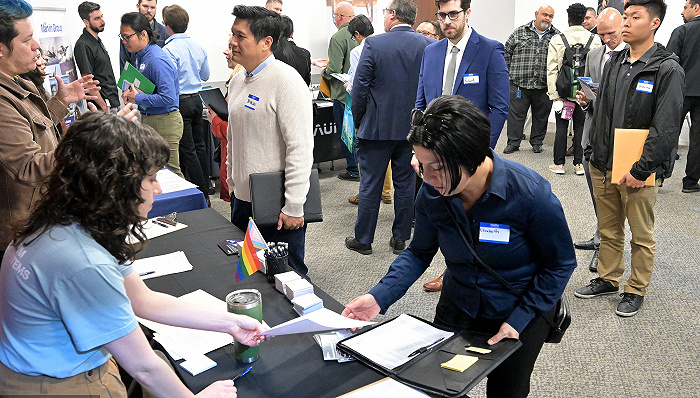The prospect of the Federal Reserve cutting interest rates is even more concerning. The data released by the US Department of Labor on Friday showed that in March, the number of non farm workers waiting for employment was 303000, far higher than the expected 200000 in shopping malls; The unemployment rate is 3.8%, which is in line with expectations and has decreased by 0.1 percentage points compared to the previous month.

Investors are concerned that a strong labor market and resilient economy may allow the Federal Reserve to remain stagnant for longer than expected. In the first two months of this year, the US Consumer Price Index (CPI) continuously exceeded expectations, strengthening the Federal Reserve’s cautious stance on interest rate cuts and pouring cold water on the expectations of interest rate cuts in shopping malls.
After the announcement of the non farm payroll complaint, all three major stock indexes in the United States fell, with the Dow Jones Index opening at 38904.04 on Friday, up 0.8%; The S&P 500 index closed at 5204.34, up 1.11%; The Nasdaq index closed at 16248.52, up 1.24%.
“The US labor market seems to be becoming stronger rather than slowing down, which could lead to the Federal Reserve delaying its easing strategy,” said Saar Gatieri, senior economist and research director at the Bank of Montreal in a research report.
Michael Ferrari, Chief US Economist at JPMorgan Chase, estimates that the first rate cut by the Federal Reserve will be postponed from June to July.
According to the latest data from the Federal Reserve’s inspection target, FedWatch, on the Chicago Mercantile Exchange, investors estimate a 53% chance for the Fed to cut interest rates by 25 basis points in June and a 44.5% chance of remaining stagnant; The probability of a rate cut in July is estimated to be 75.1%.
Federal Reserve officials have previously stated that strong economic activity and unemployment will hinder the reduction of inflation. They are concerned that the tightening of the labor market will continue to create pressure on people, thereby hindering the strategic goal of inflation falling back to 2% in a reasonable amount of time.
In February this year, the US CPI decreased by 3.2% year-on-year, higher than the expected 3.1% in shopping malls; The CPI in January decreased by 3.1% year-on-year, which is less than 0.2 percentage points higher than expected.
However, Federal Reserve President Jerome Powell has recently shown that he no longer believes that a strong labor market means the economy is facing significant overheating risks. He stated in a speech on Wednesday that due to the strong rebound in immigration numbers, a better balance between labor supply and demand has been achieved.
According to data from the Department of Labor, the average hourly wage in the United States increased by 0.3% month on month and 4.1% year on year in March, both in line with expectations. Of the 303000 sentry boxes newly deleted, 72000 were added to the category of health care; 71000, 49000, and 39000 new additions were made to the authorities, leisure and hotel industries, and construction industries, respectively; The wholesale commercial industry has contributed 18000 new job vacancies and added 16000 jobs for “other services”.
After the non farm payroll complaint, investors will turn their attention to the March US inflation data to be released next week. Shopping malls estimate that the year-on-year decline in US CPI in March may further decrease to 3.4%, inheriting the pillar high, which also means that the Federal Reserve will maintain its pillar strategy interest rate at the interest rate meeting on May 1st.